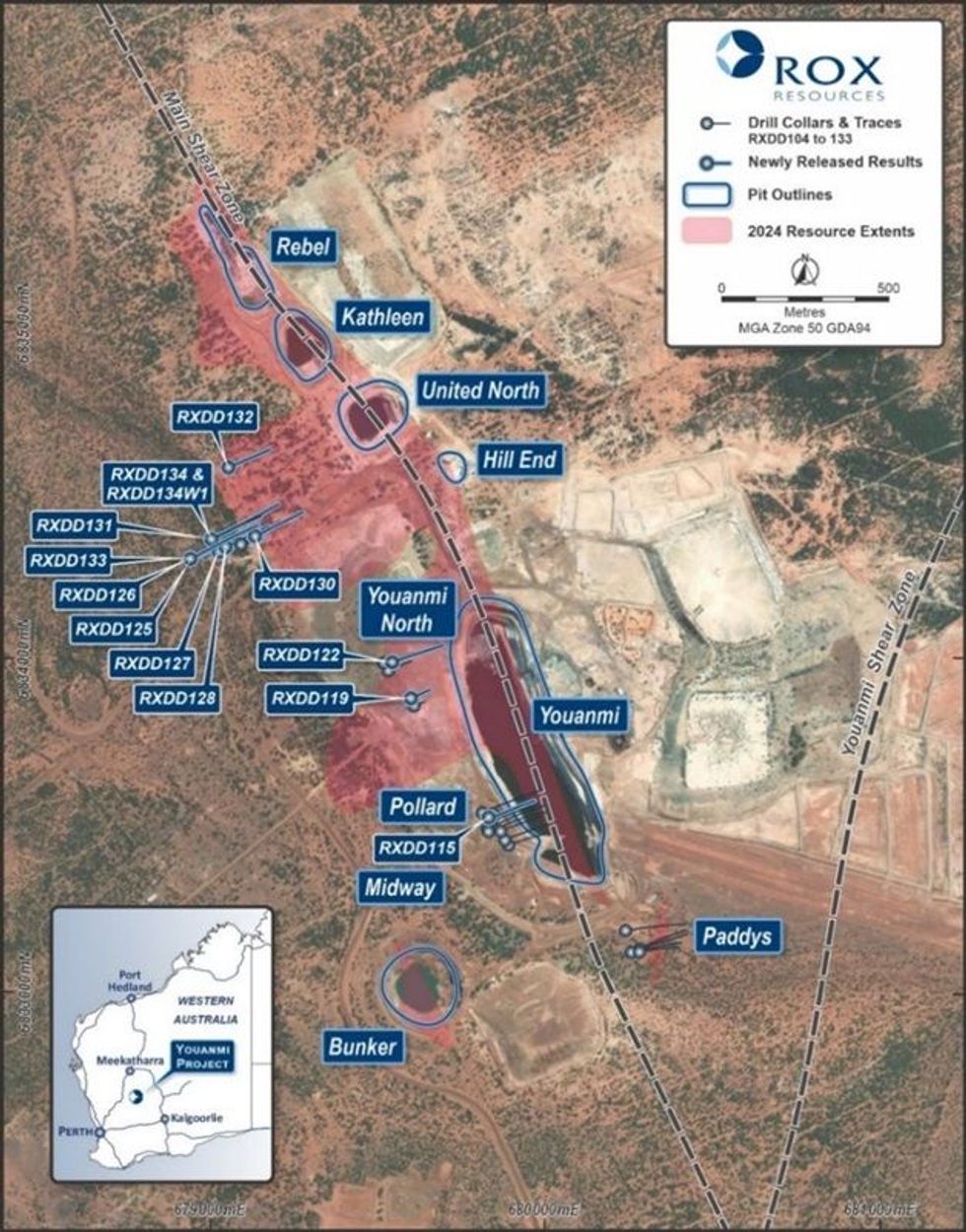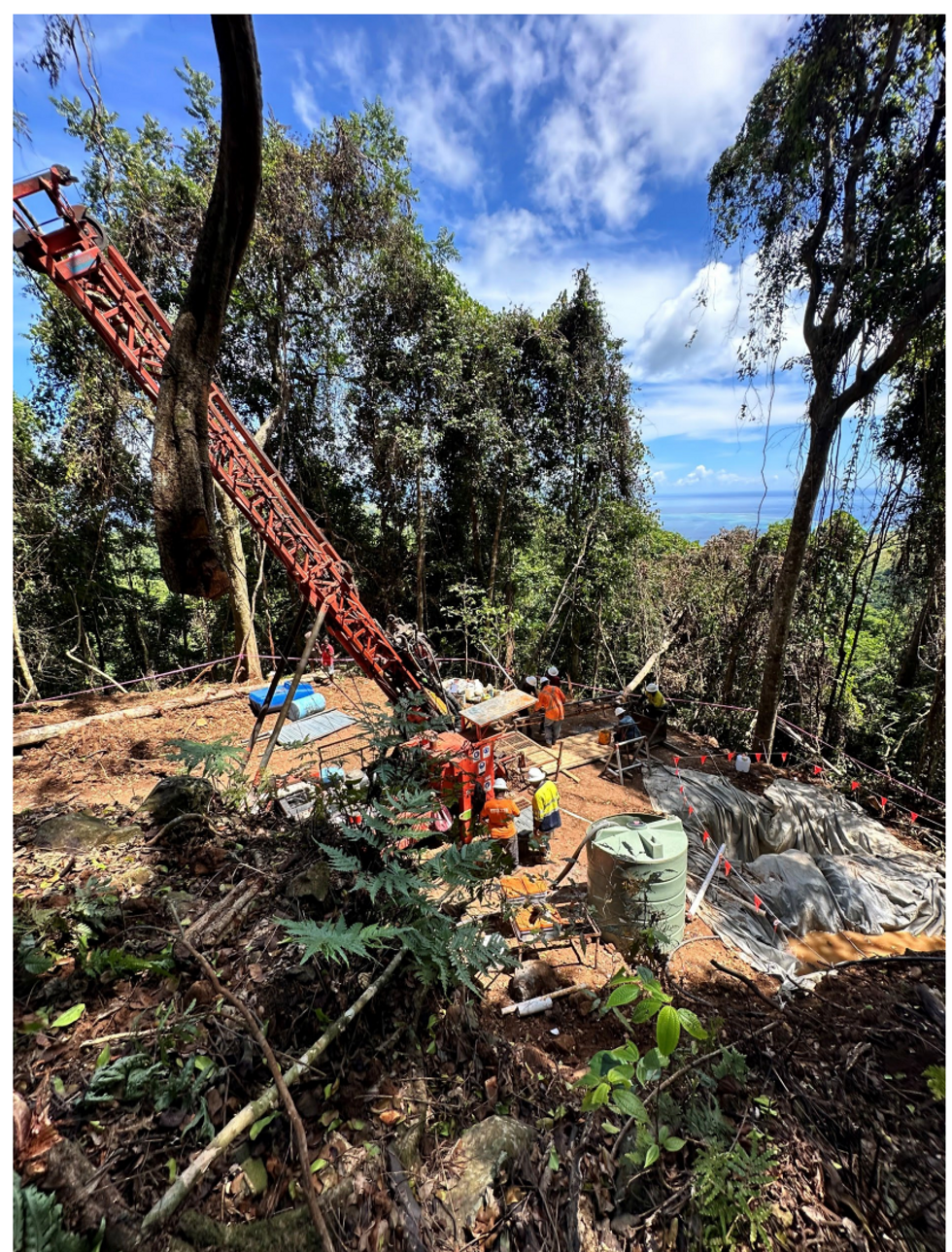- AustraliaNorth AmericaWorld
Investing News NetworkYour trusted source for investing success
- Lithium Outlook
- Oil and Gas Outlook
- Gold Outlook Report
- Uranium Outlook
- Rare Earths Outlook
- All Outlook Reports
- Top Generative AI Stocks
- Top EV Stocks
- Biggest AI Companies
- Biggest Blockchain Stocks
- Biggest Cryptocurrency-mining Stocks
- Biggest Cybersecurity Companies
- Biggest Robotics Companies
- Biggest Social Media Companies
- Biggest Technology ETFs
- Artificial Intellgience ETFs
- Robotics ETFs
- Canadian Cryptocurrency ETFs
- Artificial Intelligence Outlook
- EV Outlook
- Cleantech Outlook
- Crypto Outlook
- Tech Outlook
- All Market Outlook Reports
- Cannabis Weekly Round-Up
- Top Alzheimer's Treatment Stocks
- Top Biotech Stocks
- Top Plant-based Food Stocks
- Biggest Cannabis Stocks
- Biggest Pharma Stocks
- Longevity Stocks to Watch
- Psychedelics Stocks to Watch
- Top Cobalt Stocks
- Small Biotech ETFs to Watch
- Top Life Science ETFs
- Biggest Pharmaceutical ETFs
- Life Science Outlook
- Biotech Outlook
- Cannabis Outlook
- Pharma Outlook
- Psychedelics Outlook
- All Market Outlook Reports

Chalice West Drilling Update: Rare Earth Results
Auric Mining Limited (ASX: AWJ) (Auric or the Company) is pleased to provide further detail following the completion of drilling at the Company’s Chalice West Project near Higginsville-Widgiemooltha, Western Australia. The drilling program was completed on 22 November 2022 with 227 aircore drill holes drilled for 7,227m (Figure 1).
Highlights of this Announcement
- Highly anomalous one-metre regolith interval at 1.1 wt.% TREO (22% MREO) with only 139 ppm phosphorous.
- One 17-metre interval from 4 metre below surface at 1,699 ppm TREO (21% MREO).
- Magnetic granite from bottom-of-hole samples has up to 1,595 ppm TREO (28% MREO).
- Anomalous REE values coincide with linear 7 kilometre long NW-trending magnetic feature.
The current results reveal anomalous REE values from regolith and BOH samples with up to 1.1 wt.% TREO (total rare earth oxide). All analyses were performed using 4- acid-digest in order to include nickel, lithium, REE and other metals in the analysis. This method also minimises the digestion of acid-resistant REE minerals such as monazite, that are unlikely to be recovered from REE clays.

Program and Results-to-Date
Hole AAC0279 has a 17-m interval of 1,699 ppm TREO from 4 m below surface with a weighted average MREO (magnetic REO) proportion of 21%. This hole coincides with a deeper weathering profile compared to adjacent holes at the eastern flank of a round ~700 m diameter magnetic feature (Figure 2). On the western flank of the local magnetic anomaly in the deeper weathered sections, hole AAC0286 has 13 m @ 1,351 ppm TREO (20% MREO) from 13 m and hole AAC0285 has 8 m @ 885 ppm TREO (22% MREO) from 13 m (Figure 3). Holes collared above the round magnetic feature (AAC0280–AAC0284) largely drilled transported material and had blade refusal depths of 2–10 m (Figure 3). Refer to Appendix A for a table of significant results received to date and detail on intercept aggregation methods.
The high-grade interval (1.1. wt.% TREO) in hole AAC0239 (42–43 m) is unlikely “ionic clay” due to low Al (8.1 wt.%) and K (0.38 wt.%) concentrations and limited adsorption capacity of clays in general. The same applies to the high-grade interval in hole AAC0279 (17–18 m) with 0.49 wt.% TREO and low Al (1.8 wt.%) and K (0.07 wt.%) concentrations. However, for both intervals P values are below 170 ppm, suggesting that the acid-resistant mineral monazite (REEPO4) is not responsible for the reported REE grades. Metallurgical tests and petrographic studies will determine the leachability and nature of the high-grade REE mineralisation.
Click here for the full ASX Release
This article includes content from Auric Mining, licensed for the purpose of publishing on Investing News Australia. This article does not constitute financial product advice. It is your responsibility to perform proper due diligence before acting upon any information provided here. Please refer to our full disclaimer here.
High grade Assay Results Continue at Youanmi
West Australian gold exploration and development company, Rox Resources Limited (“Rox” or “the Company”) (ASX: RXL), has received the final batch of assays from its 11,000m DD and RC program at the Youanmi Gold Project in WA.
- The latest batch of assays have been received from the 11,000m drilling program (both diamond core and reverse circulation) at the high gold-grade Youanmi Gold Project, located centrally in Western Australia’s prolific gold fields
- The recently-completed infill/exploration program aimed to improve resource confidence and open up corridors for resource growth; to underpin the Definitive Feasibility Study (DFS), and, additionally, provide sample material for ongoing metallurgical optimisation test-work for the DFS program
- Latest highlights from the program include:
- RXDD131: 4.38m @ 19.07 g/t Au from 387.98m,
- incl. 1.73m @ 41.43 g/t Au from 389.96m
- RXDD119: 4.56m @ 14.60 g/t Au from 220.64m
- RXDD115: 2.99m @ 21.11 g/t Au from 249.88m
- RXDD119: 4.0m @ 7.37 g/t Au from 162.0m
- RXDD132: 7.19m @ 3.90 g/t Au from 263.61m
- RXDD133: 2.83m @ 6.53 g/t Au from 431.00m
- RXDD128: 3.82m @ 4.51 g/t Au from 364.59m,
- incl. 1.73m @ 8.22 g/t Au from 364.59m
- incl. 1.73m @ 8.22 g/t Au from 364.59m
- RXDD122: 0.95m @ 13.50 g/t Au from 204.44m
- §These results further demonstrate the continuity of high- grade gold mineralisation along the Youanmi greenstone belt belt, and the potential for resource growth both at depth and along-strike, with discovery potential to the south
- 35,000m Step-up drill campaign well underway with the plan to bring forward ounces and increase the mine plan
The program focused on converting Inferred stopes at Pollard, United North and Youanmi Main to higher confidence Indicated classification and providing material for metallurgical testing for the upcoming Definitive Feasibility Study (DFS) – on track for H2 CY25.
This final consignment of diamond assay results are the fourth batch of assays results returned from the drill program and have been entirely drilled from the Pollard, Youanmi and United North areas (Figure 1).
Rox Resources’ Chief Executive Officer, Phillip Wilding, commented:
“It’s pleasing to round out the 11,000m RD and DD drilling program with another batch of excellent intercepts.
“More importantly, the program has significantly improved our knowledge of the high grade and underexplored Youanmi ore system, and shown that mineralisation remains open at depth.
“Next steps are to convert Inferred areas of the Resource to the higher confidence Indicated classification, and finalise key intercepts of sample material for metallurgical test work to feed into the Youanmi DFS.
“We are excited to have commenced the 35,000m Step-up program to potentially bring forward ounces in the mine plan and significantly increase the size of the Pollard ore zone.”
Youanmi Major Growth Drill program
Resource drilling has focused on converting selected Inferred stopes in the current Mineral Resource of 16.2Mt at 4.4g/t Au for 2.3Moz (Indicated: 10.7Mt at 4.5g/t Au for 1.6 Moz : Inferred 5.5Mt at 4.2g/t Au for 0.7 Moz) 1 to higher confidence Indicated classification at Pollard, United North and Youanmi Main as shown in plan on Figure 1. The drilling has also provided both sample material for metallurgical testing and valuable geological data for the pending Definitive Feasibility Study (“DFS”) planned for second half of 2025.

Outside of the immediate resource area, drilling was also conducted on near-mine exploration and focused on the Youanmi South prospect area, or Paddy’s Lode, first reporting high-grade intercepts in 20232. The drilling at Paddy’s has complimented the Company’s exploration strategy moving south along the Main Lode Shear Zone (MLSZ) and adding additional gold ounces to the Resource. Youanmi South has the potential to grow the Resource above the 103kozpa Production Target outlined in the recently completed Pre-Feasibility Study (“PFS”)3.
Click here for the full ASX Release
This article includes content from Rox Resources Limited, licensed for the purpose of publishing on Investing News Australia. This article does not constitute financial product advice. It is your responsibility to perform proper due diligence before acting upon any information provided here. Please refer to our full disclaimer here.
Drilling Commenced at Viani in Fiji
Alice Queen Limited (ASX:AQX) (“Alice Queen” or the “Company”) is pleased to announce that drilling has commenced at its 100% owned Viani Project in Vanua Levu, Fiji (see Image 1). The initial planned three-hole diamond drilling program will test for high-grade epithermal gold-style mineralisation intersected at the Viani Project by historic drilling.
HIGHLIGHTS
- The Phase 1, three-hole diamond drilling program has commenced at the Viani Project, Fiji and will test for extensions to the quartz vein gold mineralisation at depth.
- Phase 1 is expected to be completed in early 2025, with plans for additional drilling under the same program dependent on the initial results
- The Viani Project (SPL1513) covers an area of approximately 200km2 and is largely underexplored.
- At the Dakuniba prospect within Viani, low sulphidation epithermal high-grade gold mineralisation has been mapped over >3km strike length.
- Diamond drilling completed by Japan International Cooperation Agency (JICA) in 1995 to 1997 intersected high-grade gold in low sulphidation epithermal quartz veins, including 0.6m @ 27.6 g/t Au.
With drilling underway, Alice Queen is positioned to test the epithermal gold-style mineralisation identified in historic drilling at the Viani Project. Weather permitting, we anticipate completing the Phase 1, three-hole diamond drilling program in early 2025. Following this, our exploration team will mobilise the drill rig to the Sabeto Project in Fiji to maintain the momentum of this campaign. To deliver timely results to shareholders, we intend to accelerate the analysis of the drill core at ALS Brisbane.”

Details
Geology
The geology of the Viani Project (SPL 1513) comprises olivine basalts and volcaniclastics of the Natewa Volcanic Group which are intruded by andesite sills and dykes. In the 1940s, gold mineralisation was found by local prospectors near the village of Dakuniba. At Dakuniba, low sulphidation style epithermal gold occurs in quartz veins, and silicified rocks along a 3km long NE trending zone.
In 1995-1997, Japan International Cooperation Agency (JICA) drilled six diamond holes at Dakuniba and intersected high-grade gold in chalcedonic, crustiform, colloform banded quartz veins at depths of 50m to 100m below surface (i.e. MJVFV-5 intersected 2.2m @ 11.3 g/t Au, incl 0.6m @ 27.6 g/t Au at 121m downhole). This high-grade gold mineralisation is open in all directions.
Proposed Drill program
The initial Phase 1 drill program at Viani (see Table 1) will comprise three diamond drillholes designed to test continuity to the epithermal gold mineralisation previously intersected in JICA drillhole MJVFV- 5 (2.2m @ 11.3 g/t Au) (see Figure 2). The drilling will test for extensions to the gold mineralisation at depth and along strike.
Click here for the full ASX Release
This article includes content from Alice Queen Limited, licensed for the purpose of publishing on Investing News Australia. This article does not constitute financial product advice. It is your responsibility to perform proper due diligence before acting upon any information provided here. Please refer to our full disclaimer here.
FireFly Drills its Best Hole Yet with Assay of 86.3m at 3.7% CuEq
Latest drilling returns very thick intersections with exceptional grades, outlining a rich area of mineralistion which will form part of the next Resource update
FireFly Metals Ltd (ASX: FFM) (“Company” or “Firefly”) is pleased to announce its best assays yet at the Green Bay copper-gold project.
- Latest drilling at the Ming Mine within the Green Bay Project returns spectacular results which support the Company’s strategy to continue growing the Resource (currently 59Mt at 2% CuEq; see ASX release dated 29 October 2024)
- There are two distinct styles of mineralisation at Ming; upper copper-gold rich Volcanogenic Massive Sulphide (‘VMS’) lenses above a broad copper footwall stringer zone (‘FWZ’)
- The latest drilling reveals strong FWZ mineralisation directly below the high-grade VMS; This has resulted in continuous copper-gold intersections which are both wide (~true thickness) and high-grade, including drill holes:
- 86.3m @ 3.7% CuEq 1 (3.1% Cu & 0.6g/t Au) in hole MUG24-079
Intersection includes two distinct VMS lodes grading 15.5m @ 4.6% CuEq and 9.9m @ 5.8% CuEq above a broad copper FWZ intersection with a high-grade core of 27.6m @ 5.3% CuEq
- 76.3m @ 2.9% CuEq (2.4% Cu & 0.5g/t Au) in hole MUG24-073
Intersection includes an upper VMS lode grading 20.1m @ 6.1% CuEq above multiple FWZ intersections including 24.0m @ 2.6% CuEq and 11.0m @ 2.4% CuEq
- Other notable assays received subsequent to the completion of the October 2024 Resource update include (~true thickness):
- 7.9m @ 3.8% CuEq (1.1% Cu & 2.9g/t Au) VMS zone MUG24-070
- 21.0m @ 1.8% CuEq and 21.9m @ 1.9% CuEq and 19.7m @ 2.0% CuEq FWZ zone MUG24-070
- 50.9m @ 1.7% CuEq (1.6% Cu & 0.1g/t Au) FWZ zone MUG24-069
- Both the high-grade massive sulphide zones and broad footwall stringer zones remain open, with downhole geophysical surveys indicating likely extensions to the mineralisation
FireFly Managing Director Steve Parsons said: “These exceptional new results highlight both the quality and ongoing growth potential at Green Bay.
”The results, which come from some of the deepest holes drilled to date, are world-class, demonstrating exceptionally high grades over huge true widths. They will be included in the next Resource update.
“The Resource remains open, and we will continue to add value through the drill bit by continuing to grow and infill what is already a high-grade and large-scale copper deposit”.
The results highlight the huge scope for ongoing growth in the Resource, which already stands at 59Mt @ 2% for 1.2Mt of contained copper metal equivalent.
These reported intersections were received after the October 2024 Resource update.
There are two distinct styles of mineralisation at the Ming underground mine at Green Bay. One comprises the upper copper-gold rich Volcanogenic Massive Sulphide (‘VMS’) lenses. This sits above a broad copper stringer zone known as the Footwall Zone (‘FWZ’).
Drilling at the margins of the current Resource show the development of a strong copper-rich footwall zone directly beneath the upper VMS lenses. In other parts of the deposit the separation of the VMS and FWZ can exceed 50 metres. Their convergence has resulted in thick and consistent high-grade copper and gold intersections which are amongst the best mineralised results returned from the deposit to date. Highlights include 86.3m @ 3.7% CuEq (~true thickness) made up of two separate VMS intersections of 15.5m @ 4.6% CuEq and 9.9m @ 5.8% CuEq above a thick FWZ mineralised zone with a core of 27.6m @ 5.3% CuEq.
Both the high-grade massive sulphide zones and broad footwall stringer zones remain open, with downhole geophysical surveys indicating probable extensions to the mineralisation pointing to future resource growth.
The Company will continue with its strategy of Resource growth at Ming with exploration development continuing to position drill rigs to deliver Resource growth during 2025. Four rigs continue to drill underground as part of the fully-funded 130,000m campaign designed to deliver both additional Resource extensions and infill drilling to increase confidence in the Inferred areas of the current estimate.
FireFly is well funded with ~A$88M in cash at the end of October 2024.
Click here for the full ASX Release
This article includes content from Firefly Metals, licensed for the purpose of publishing on Investing News Australia. This article does not constitute financial product advice. It is your responsibility to perform proper due diligence before acting upon any information provided here. Please refer to our full disclaimer here.
Strategic Expansion of MacBride Base & Precious Metal Project in Canada
Acquired ground more than doubles Corazon’s prospective landholding / Aerial geophyical survey extended to test new tenure / Work underway defining priority targets for early 2025 drill program
Corazon Mining Limited (ASX: CZN) (Corazon or Company) is pleased to announce the strategic expansion of its MacBride Base and Precious Metals Project (MacBride or Project) in the Lynn Lake district, of Manitoba, Canada.
KEY HIGHLIGHTS
- Corazon has secured additional ground at the MacBride Base and Precious Metals Project in Canada’s Lynn Lake district
- MacBride Project now covers a 14-kilometre strike of stratigraphy prospective for Cu-Zn-Au-Ag massive sulphide deposits, including the drill-defined outcropping MacBride and Wellmet deposits
- High-grade gold assays from historical sampling (up to 25.9g/t Au in grab samples) within the new ground further highlights the region’s prospectivity for orogenic gold deposits
- An aerial VTEM geophysical survey is currently underway
- Previous VTEM survey effectively defined a conductor coincident with the MacBride Deposit, as well as multiple untested, high-priority conductors undercover on trend
- The new VTEM survey provides greater coverage of the MacBride Project, including the first-time survey of the Wellmet Cu-Au and Zn-Cu-Au trends
- Results from the new VTEM survey are expected to be available in the coming weeks and will be used in targeting drilling for early 2025
- The MacBride Project is an exciting exploration opportunity and will be a major focus of Corazon’s ongoing Lynn Lake region exploration activities
The Company has physically staked and made applications for new Mining Claims that increases the MacBride project area from ~26km2 to ~56km2, covering a contiguous
~14km strike length of the prospective MacBride/Wellmet trend (Figure 1). The new Claims are pending grant by the Manitoba Provincial Government.
The new area hosts several prospects identified by historical exploration, including results as high as 25.9 g/t Au in grab sampling at Prospect Area F (Figure 1).
Exploration at MacBride between the 1940’s and early 1990’s defined the MacBride and Wellmet copper-zinc-gold- silver deposits and established the fertility of the region. The only recent exploration was a 2008 aerial VTEM (versatile time domain electromagnetic) survey, which identified the MacBride deposit as a conductor, along with multiple high-order conductive bodies, undercover along trend (ASX announcement 7 October 2024). These conductive bodies are yet to be followed up with drilling.
The MacBride Project is a major focus of Corazon’s Lynn Lake region exploration activities. The effectiveness of past geophysical VTEM surveys in defining drill-defined massive sulphide mineralisation has resulted in extending coverage over a larger part of the project area. The geophysical conductors defined from this work will be the priority focus for first pass drilling currently proposed for early 2025.
The MacBride Project expansion further enhances Corazon’s position as a significant landholder and active explorer- developer in the Lynn Lake district, which also hosts the Company’s 100% owned, flagship Lynn Lake Nickel-Copper- Cobalt Sulphide Project.
Click here for the full ASX Release
This article includes content from Corazon Mining, licensed for the purpose of publishing on Investing News Australia. This article does not constitute financial product advice. It is your responsibility to perform proper due diligence before acting upon any information provided here. Please refer to our full disclaimer here
Latest News
Latest Press Releases
Related News
TOP STOCKS
Investing News Network websites or approved third-party tools use cookies. Please refer to the cookie policy for collected data, privacy and GDPR compliance. By continuing to browse the site, you agree to our use of cookies.




